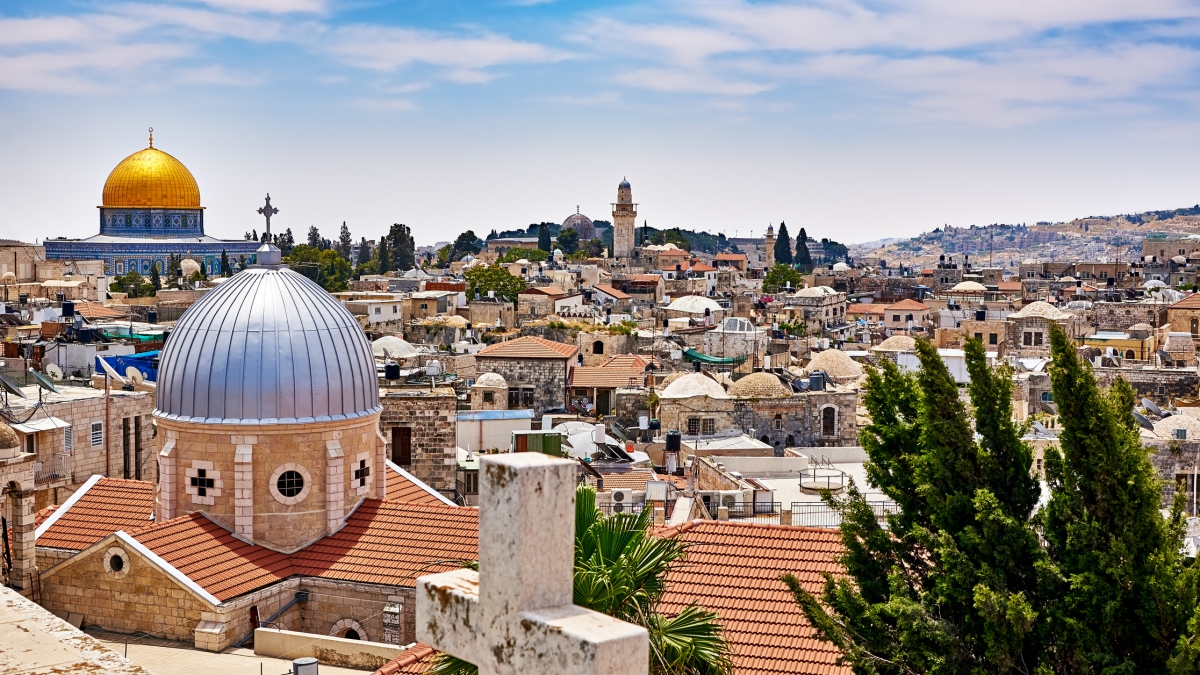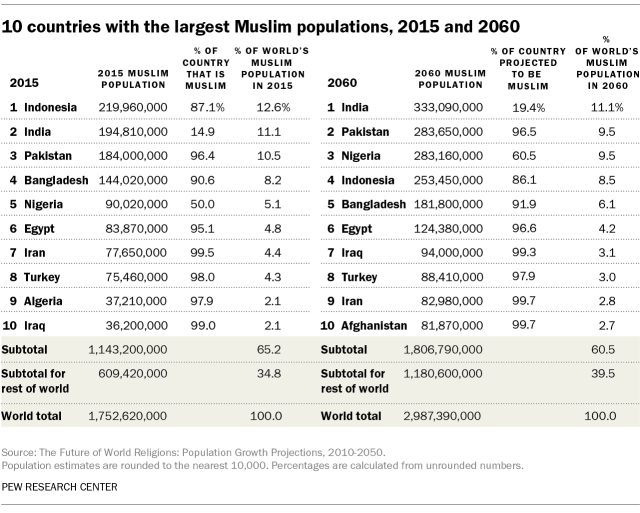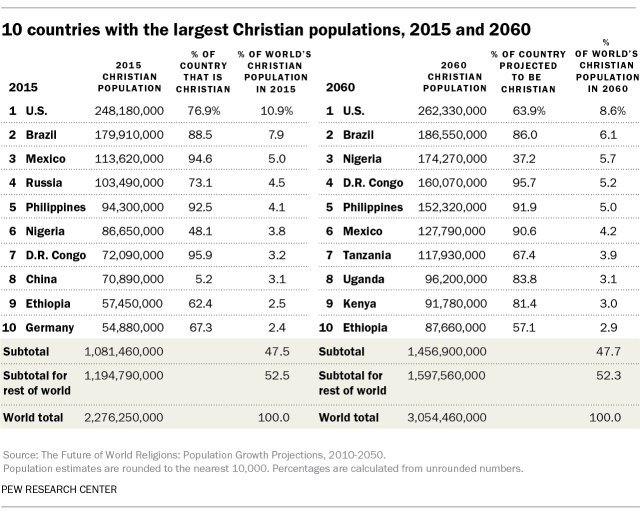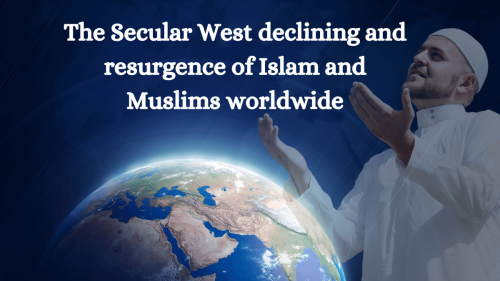Top 10: Christian and Muslim Populations

“Top 10” lists can often be helpful in displaying and illuminating data. For example, the two tables of countries with the largest Christian and Muslim populations featured here reveal differences in the concentration, diversity and projected changes in the world’s two largest religions.
The two lists show that the global Muslim population is more heavily concentrated in Islam’s main population centers than the global Christian population is for Christianity, which is more widely dispersed around the world. Indeed, about two-thirds (65%) of the world’s Muslims live in the countries with the 10 largest Muslim populations, while only 48% of the world’s Christians live in the countries with the 10 largest Christian populations.

To put it another way, more than half (52%) of the world’s Christians live in countries other than those with the 10 largest Christian populations, while this is true for just over a third (35%) of the world’s Muslims. In absolute terms, there are twice as many Christians (1.2 billion) as there are Muslims (609 million) living in countries that are not on their religion’s top 10 list.

A number of the countries with the world’s 10 largest Muslim or Christian populations also have large (and in some cases, larger) populations of other faith groups. In India, which has the second-largest Muslim population, Islam is a minority religion (making up 15% of the country’s population) and Hinduism is the majority faith. Nigeria, which has the sixth-largest Christian population in the world (87 million), also has the world’s fifth-largest Muslim population (90 million).
In addition, the lists illustrate the extent to which the population centers for these religions have moved away from their historical and traditional hubs. The countries with the five highest Muslim populations are all in South and Southeast Asia or in sub-Saharan Africa, rather than the Middle East; and the countries with the three highest Christian populations are in the Americas rather than in the Middle East or Europe.
Overall, there are about 2.3 billion Christians in the world and 1.8 billion Muslims. That gap is expected to narrow by 2060, when Pew Research Center projects there will be 3 billion Christians and nearly 3 billion Muslims. That’s because Muslims, on average, are younger and have more children than do Christians.
In 2060, the share of the world’s Muslims living in the countries with the 10 largest Muslim populations is expected to be slightly lower than it is today (60% vs. 65%). Meanwhile, the share of Christians living in the 10 countries with the highest Christian populations is expected to remain the same (48%).
The 2060 lists for Muslims and Christians are also expected to change in other ways. By 2060, India is expected to supplant Indonesia as the country with the largest Muslim population. Still, India’s Muslim population will remain a minority religious group (19%) in the Hindu-majority country.
The country with the highest Christian population, the United States, is expected to remain in that position in 2060. Lower down on the list, Tanzania, Uganda and Kenya are expected to be added, while Russia, Germany and China will fall out of the top 10.
Jeff Diamant is a senior writer/editor focusing on religion at Pew Research Center.
( Source: Pew Research Center )

















